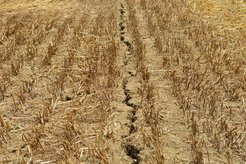Drought hits rivers first and more strongly than agriculture
A new study by researchers from Germany and Sweden has revealed the development of drought impacts, like in this summer, across Europe. The study shows that persisting and accumulating precipitation deficits cause decreased soil moisture within days and lower stream flows within weeks, while vegetation and crops can remain unaffected for several months.

The study reveals these typical drought development pathways: rainfall deficits propagate first through soil moisture reductions, then to river runoff depletions, and finally cause impacts on vegetation and crop yields. Deciphering this partitioning of water deficits across different parts of the freshwater system is a crucial step forward in mitigation strategies, as the respective water anomalies threaten different societal sectors and ecosystems.
The researchers suggest that drought response measures need to be tailored based on their new findings on drought development: Early into a drought, response measures should focus on adapting to low(er) stream flows by more efficiently using and storing water. Further into the drought, the focus should be on irrigation support of essential crops and vegetation, while balancing and temporarily limiting other water uses. “Such improved drought management might become even more relevant in the future, with possibly increasing drought frequency and/or magnitude as the climate changes” says Georgia Destouni, Professor at Stockholm University in Sweden.
The study was conducted by René Orth (rene.orth@bgc-jena.mpg.de), group leader at the Max Planck Institute for Biogeochemistry in Jena, Germany, and Georgia Destouni (georgia.destouni@natgeo.su.se), Professor at Stockholm University, Sweden.
